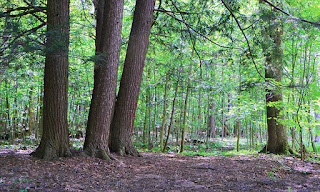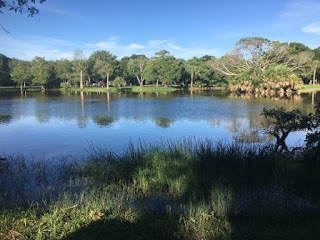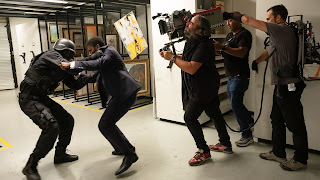Creepy! Genre Research: The Conventions of Thrillers
Camera Angles/Movements:
Dutch angle shots are often used and add intrigue and mystery to the scene. Foreground creativity is utilized, often with the camera’s vision being partially blocked by an object, like blinds. Pans and tilts are also used heavily to scan scenes, either for establishing shots or to create the feeling that a character is looking for a threat. Close ups are used to highlight important prompts (likely to be a weapon of some kind) or facial expressions.
Mise-en-scene:
Costumes: These are adjacent to regular clothing in everyday life. There is a very down-to-earth quality when it comes to the protagonists’ costumes in this genre.
Lighting: The lighting can be the everyday natural or artificial lighting, but the lighting of certain environments can be made to be disorienting, heightening the tension.
Acting: Acting in these movies tend to down-to-earth as well, with very subtle expressions and movements. This subtle expressions tend to allow the audience to relate more to the characters and feel their emotions.
Makeup: The makeup is also very everyday, with occasion of SFX needed to create injuries like cuts or bruises.
Props: The props can depend on the story being told. For example, if the story takes place in a town or city, actors would likely be carrying purses, backpacks, and water bottles as props. If the story takes place in a hospital, then IVs, stethoscopes, and thermometers would be common props. There’s hardly any sort of supernatural props(like wands or fantasy weaponry).
Settings: The setting can also depend on the story being told, but they are usually everyday small towns. This heavily impacts the other aspects of the mis-en-scene and how the audience is likely to see the characters as very similar to themselves.
Editing: Shots/reverse shots are extremely common, as they emphasize communication between the characters. Cutaways are also used, showing flashbacks or as a transition to another moment in the story. Action matches and eyeline matches are also used to emphasize the characters’ points of view and their movements, but editing in this genre is usually very simplistic.
Sound: Diegetic sound typically centers in on dialogue and ambient sound. Usually, diegetic sound will be the focus and non-diegetic sound(like sound motifs) are used infrequently to keep in audience in the characters’ shoes. Diegetic sound(like creaks or subtle breathing) can be added to the film, immersing the audience further.
- The Positives: The sound design has a lot of potential, and replicating clever usage of diegetic sound would be good for our film. This also ties into the way thriller films create suspense for their viewers, which would also improve our film immensely. Overall, films in this genre are able to create suspense and immerse the audience effectively, which is what a great scary film does.
The Negatives: The editing and the costumes/makeup are a bit too simple for our tastes. While less is often more, there is nothing wrong with wanting to add a bit of variety and interest to our actors’ outfits. It would definitely allow us to characterize them more and allow their personality to shine through. Also, we hoped we could make our editing more ambitious, which would hopefully add interest to the visuals of our film. Action matches and eyeline matches tend to be very subtle, but they add something to the cinematography of films, which is why we want to include that.
Film Examples:
- The Woman in the Window
- Escape Room
The Good Nurse
-The 355




Comments
Post a Comment